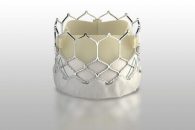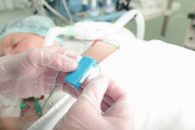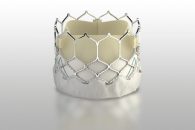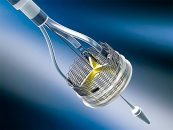The ACURATE Neo2 valve is an evolution of the first-generation ACURATE Neo valve with a low rate of pacemaker implantation and a decrease in paravalvular leak, also compatible with the 14F introducer. This prospective study included patients with symptomatic severe aortic stenosis at high surgical risk who underwent ACURATE Neo2 valve implantation. The primary endpoint…
Should We Treat Stroke Percutaneously in TAVR?
Since its inception, transcatheter aortic valve replacement (TAVR) has improved greatly. However, there still are five big challenges to be solved: paravalvular leak, conduction disturbances, debilitating stroke, impaired kidney function, and major vascular complications and bleeding. Most cases of stroke are periprocedural and ischemic. So far, they have not been well analyzed in terms of…
Device Evolution Also Impacts on Valve in Valve
TAVR to treat dysfunctional biological prosthetics (ViV) with the last generation self-expandable supra-annular prosthetic offers excellent results both clinical and hemodynamic. In addition, there were additional reductions of paravalvular regurgitation compared against the original models. The present registry published in JAHA is the most extensive to treat this issue and replicate outcomes from the clinical…
SAPIEN 3 Ultra: Lower Incidence of Paravalvular Regurgitation?
Paravalvular regurgitation after transcatheter aortic valve replacement (TAVR) have historically been associated with worse clinical outcomes. Even mild leaks have been shown to be harmful. This study looked at a real-world experience with the transcatheter heart valve SAPIEN 3 Ultra in the US. The SAPIEN 3 Ultra is a new generation balloon-expandable heart valve with…
Balloon-Expandable Valve Outdoes Itself
The objective of this paper recently published in J Am Coll Cardiol Intv was to compare the outcomes of transcatheter aortic valve replacement (TAVR) with the new Sapien 3 Ultra vs. Sapien 3. Successful implantation was extremely high with both balloon-expandable devices, which also had a very low adverse event rates. However, Sapien Ultra was significantly better…
Bundle Branch Block and Need for Permanent Pacemaker, a Major Challenge after TAVR
Courtesy of Dr. Carlos Fava. The development of new valves for TAVR and the increased experienced of operators have significantly decreased paravalvular leak. However, new bundle Branch block (BBB) and the need for permanent pacemaker (PPM) are still relatively high, and their impact and evolution remain controversial. The study looked at 816 patients, 437…
TAVR Post-dilation Is Safe
Courtesy of Dr. Carlos Fava. Numerous studies have shown that the presence of aortic regurgitation after TAVR is associated with worse evolution, and that balloon post-dilation (BPD) is the adequate strategy to correct this. However, a few reports using first generation valves have associated BPD to complications such as stroke, annulus rupture and valve displacement,…
Development of New Valves Lowers Need for Pacemaker
Courtesy of Dr. Carlos Fava. While the benefits of TAVR are well-known, the need for a permanent pacemaker after implantation is still an issue to solve, even though new valves have reduced it. This study enrolled 175 patients who underwent TAVR with an ACURATE neo TF valve. In this population, 58% of patients were women and the…
The SOURCE 3 Confirms the Good Outcomes of the SAPIEN 3 at One Year Followup
Transcatheter aortic valve replacement (TAVR) was developed as a strategy to treat non-surgical aortic stenosis, and was later expanded to elderly patients at intermediate risk, because of increased operator experience (overcoming the learning curve) and improved devices. The present study presents the one year outcomes of the SOURCE 3 trial, the multicenter European registry of the…
REPRISE III: Need for Pacemaker and Paravalvular Leak with Lotus
A recent presentation at London Valves took a closer look at the REPRISE III trial as regards two points that generated much discussion, such as need for a pacemaker and paravalvular leak. REPRISE III had previously demonstrated that the Lotus is noninferior to first-generation CoreValve and Evolut R in terms of safety. Additionally, it proved to be superior…
- 1
- 2








